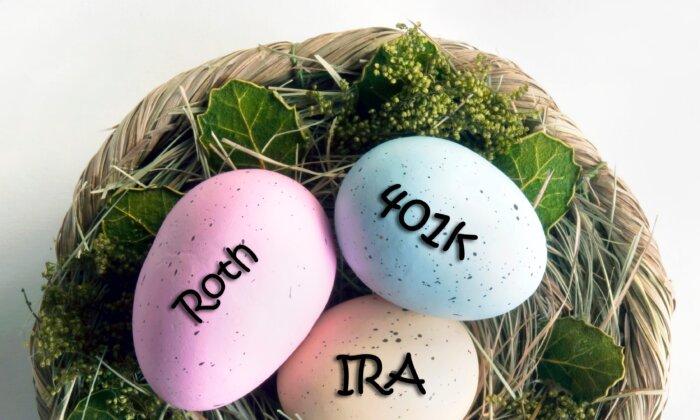The end of 2022 saw the passing of Setting Every Community Up for Retirement Enhancement (SECURE) Act 2.0, which brought about many changes, including some that drastically affect some 401(k) benefits. Many of these improvements are very welcome for people with these common retirement plans.
The changes should encourage more employees to invest more in their 401(k) and be better prepared for retirement. It is a good time to start preparing, too, because it is uncertain what will happen to Social Security payments in the not-too-distant future.
Higher Catch-Up Contribution Limits
Secure Act 2.0 made two changes that affect the 401(k) contribution limits. Fidelity says the standard limit for 2023 is $22,500, but if you are 50 or older, you can add another $7,500. When employers and employees contribute to the plan, up to $66,000 can be put into the account.The Secure Act also added a new contribution allowance. Once 2025 rolls around, people between 60–63 can contribute a catch-up amount of up to $11,250 in their 401(k).
Something to remember when making contributions to 401(k) plans is that the total allowable contributions is $22,500. It does not matter if you have more than one 401(k). You will pay a penalty if you exceed that amount, unless you are 50 or older. If you want to invest more money into a retirement plan, open an IRA or a health savings account.
Built-In Money for Emergencies
Before the Secure Act 2.0, early 401(k) withdrawals were penalized with a 10 percent penalty, plus the withdrawal was taxed at the individual’s income tax rate. TrustandWill says employers can now create an emergency fund within the 401(k). Employees can put up to $2,500 into this fund for emergencies. The first four withdrawals within a year will be tax and penalty-free.New exceptions will also enable employees to withdraw money without taxes or a penalty. Employees who become terminally ill, need to pay for long-term care insurance, are domestic abuse victims, can make withdrawals. After a federal disaster, victims can withdraw up to $22,000 and have the option to repay it and the taxes within three years.
Government Contributions for Low-Income Earners
Starting in 2027, the federal government will begin depositing $1,000 each year into people’s accounts that have a tax liability. Later, other low-income earners will also benefit from the government’s contributions. The goal is to encourage people with lower incomes to start saving more for retirement.Employer Contributions
Employers are allowed in some plans to contribute to their employees’ 401(k) accounts. Until Secure Act 2.0, these contributions were separate and not considered part of the employee’s income. Now, Forbes says that all employer contributions are considered vested (100 percent belonging to the employee), and must be counted as part of the employee’s income.No matter where you put your retirement money, it is always a good idea to put enough money into an employer’s 401(k) or IRA—if they offer matching money. Put enough in, as a minimum, to get their maximum contribution. It is free money, and it will grow your retirement savings faster.
Automatic Employee Enrollment
Once 2025 arrives, employers will be required to enroll their employees in either a 401(k) or 403(b) plan after they become eligible. The employer must start the plan by contributing between 3–10 percent of the employee’s salary. It will increase by 1 percent annually, topping off at 15 percent. Employees can choose not to participate if they want. Part-time employees can also be enrolled after working with the company for two years (previously three years).No Required Minimum Distribution Requirement for Roth 401(k)s
Roth 401(k) owners were previously required to take required minimum distributions (RMDs) when they turn 73. People who wanted to get around this rule in the past would roll 401k into IRA, which does not have RMDs. Starting in 2024, the government will no longer require RMDs for Roth 401(k)s.If you were required to take RMDs in 2023, you must continue taking them. Fool reminds people that if you stop, there is a 25 percent penalty on the amount you should have withdrawn (previously 50 percent).
Higher Earners Must Contribute to a Roth Plan
When you earn more than $145,000 in a previous year, Bankrate says you must put all catch-up contributions into a Roth account. It means they will be taxed, and you will not receive a deduction for it. Everyone making less than that can choose to place their contribution in a traditional 401(k).Employers Can Contribute to Student Loan Payments
Many employees cannot save money in their employer’s retirement plan because they have so little left after making their monthly student loan payments. Now, employers can match employees’ contributions, enabling them to save some money toward their retirement.Benefits of Inheriting a Roth 401(k)
Inheriting a 401(k) means that the benefactor (if a non-spouse) must empty the account within 10 years. Minors can only receive the money after reaching a specific age. CNBC says that when a Roth 401(k) passes to heirs, they will not owe any taxes because contributions are made with after-tax money.Remember the Five-Year Clock Rule
If you want to avoid penalties, you must wait five years before making withdrawals from a 401(k). The clock starts at the first of the year when you contribute to your account. The date is not reset if you open other accounts. Even if you open the retirement account in July, it counts as if you opened it in January of that same year.The Secure Act 2.0 changes made to 401(k)s make saving for retirement more flexible and attractive for most people. The increased benefits are intended to help more people save for retirement. If your employer offers one, talk to them soon about your options.
The Epoch Times copyright © 2023. The views and opinions expressed are those of the authors. They are meant for general informational purposes only and should not be construed or interpreted as a recommendation or solicitation. The Epoch Times does not provide investment, tax, legal, financial planning, estate planning, or any other personal finance advice. The Epoch Times holds no liability for the accuracy or timeliness of the information provided.








